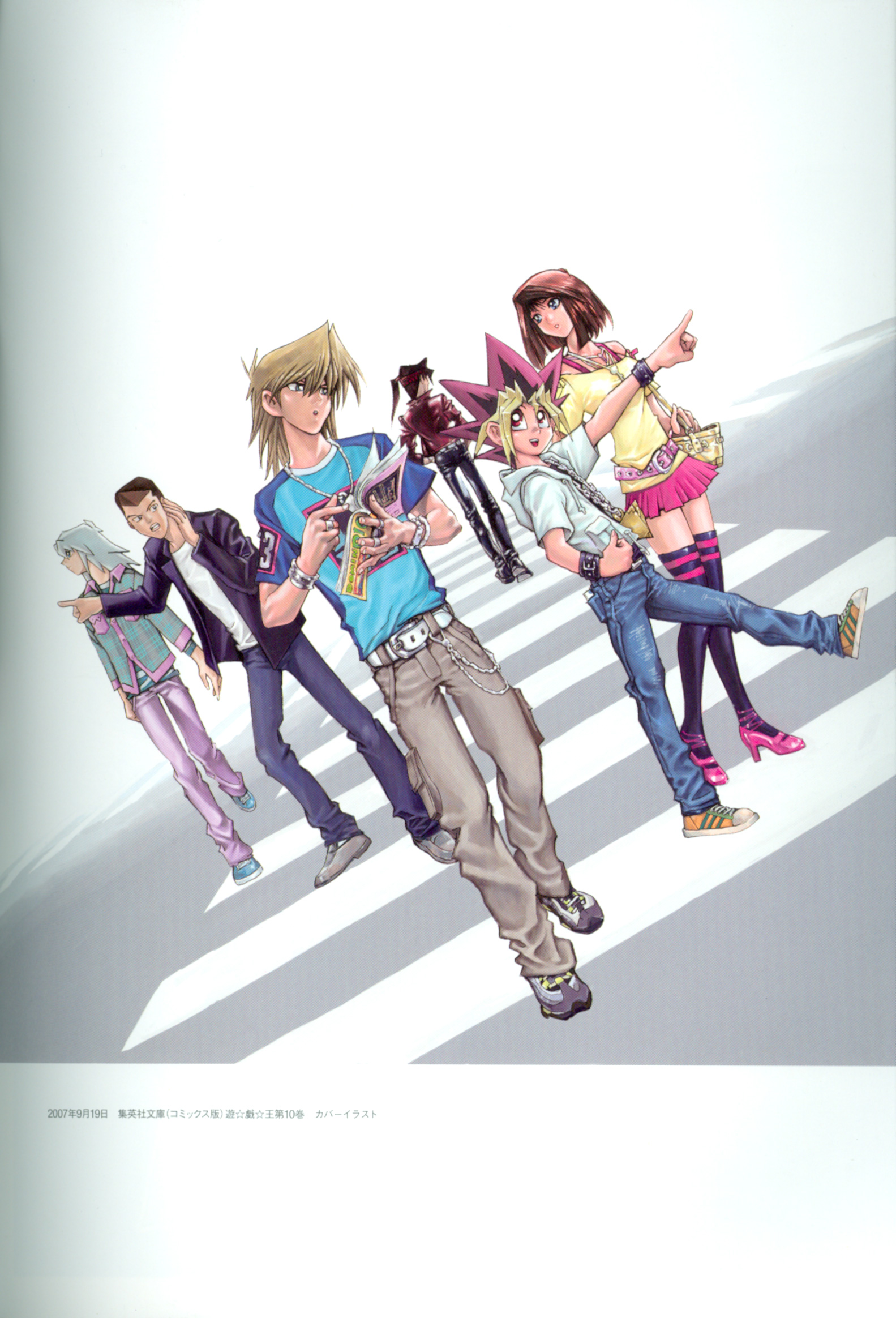
Kazuki Takahashi Yu Gi Oh Illustrations Duel Art Bookzip
Here you can download free duel art shared files found in our database: Kazuki Takahashi Yu Gi Oh! Illustrations Duel Art Book.zip mediafire.com Kazuki Takahashi Yu-Gi-Oh! Illustrations Duel Art Book.zip mediafire.com 22.89 MB Kazuki Takahashi Yu-Gi-Oh! Illustrations Duel Art Book.rar mediafire.com 22.81 MB. Apr 10, 2017 - Kazuki Takahashi's stylized illustrations are about as Japanese as it can get. Duel Art: Kazuki Takahashi Yu-Gi-Oh! Illustrations is available at.
Unsold $99.99 Buy It Now, $19.00 Shipping, 14-Day Returns, Seller: (10,797) 100%, Location: Japan, Ships to: Worldwide, Item: 71 AZ17W1B5GG830K Yugioh Kazuki Takahashi Illustrations Art Book Duel Art - Condition: Good(Used) - First Print Edition with OBI. - Language: Japanese - Total: 130 pages - Size: approx. 21 x 30 cm, 8.3 x 11.7 inchWe accept Paypal only We would appreciate receiving your payment within 7 days from purchase. COMBINED SHIPPING DISCOUNT AVAILABLE!! When you buy multiple items and choose EMS or Registered Airmail / SAL, $8 discount of shipping cost of the 2nd and any items after that.
Contents [] Career History As a child, Takahashi liked to draw, but did not start putting manga together until he was in high school. When he was 19, one of Takahashi's manga stories won a contest in a shonen manga magazine. He considers that to be his debut, but for the next ten years he went through several publishers and had a lot of rejected stories. Takahashi worked for a game company, but aspired to create manga. In 1990, he managed to create 100 pages of manga and 200 pages of sketches before bringing his first proposal to. The editor he met was bothered by the size of his submission, but read through all of it and understood that Takahashi wanted to do a battle story.
In the end that manga idea was rejected. His first work was Tokio no Tsuma, published in 1990. One of his earliest works was Tennenshokudanji Buray (天然色男児BURAY), which lasted for two volumes and was published from 1991 to 1992. Takahashi didn't find success until 1996 when he created Yu-Gi-Oh! Takahashi's popular Yu-Gi-Oh!
Manga started the creation of the Yu-Gi-Oh! Cards, known within the series as Magic and Wizards and later. However, he never intended to focus his manga on the card game he created. The original format of the manga was set in episodic chapters with a different game being played in each chapter, and the Magic and Wizards card game was originally intended to only appear in two chapters. Shueisha, the publisher of the magazine, received so many letters and fan-mail asking about the Magic and Wizards game that Takahashi decided to extend it. Takahashi had promised himself that would be the last Yu-Gi-Oh! However, he was approached at the end of 2006 with the idea for. Ip blue multilab serial number generator.
The production staff and TV board were long time associates and friends, who had spread Yu-Gi-Oh! To many people in the world, so Takahashi agreed, under the condition that this would be the last Yu-Gi-Oh! Despite this, three subsequent series,,, and have been made. Takahashi compiled various Yu-Gi-Oh!
Illustrations he'd drawn into the book which was published on December 16, 2011. After Yu-Gi-Oh!, Takahashi designed Advent Heroes, a comic and card game, influenced by American comics. In 2018, he wrote a short-form manga called The COMIQ, about a mangaka whose work is magical. It will be published in in Japanese and English. Influences Takahashi has mentioned a number of things which may have inspired him to become a mangaka.
One of them was a he used to enjoy going to when he attended elementary school. During the show, he would wonder if the old man hosting it, drew all the pictures himself. Another was an event that occurred in his first year of high school. An unfriendly teacher compared him to a defecating machine in front of the class. His classmates laughed, but he defiantly stood up and asked if a defecating machine can create comics. Takahashi decided to use battle as his primary theme. However there had been so much 'fighting' manga, he found it difficult to come up with something original.